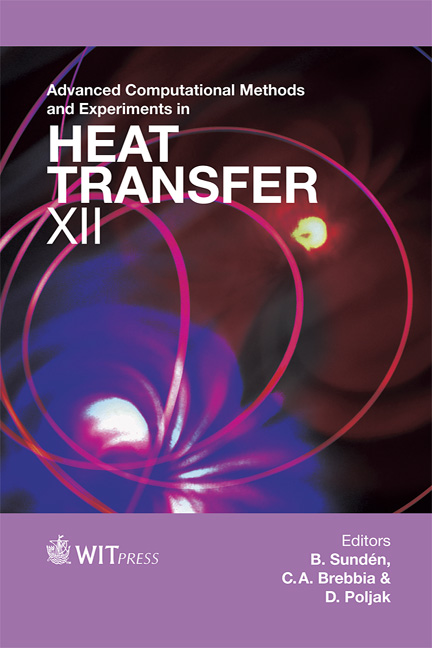The Effect Of Heat Transfer On The Polarizations Within An Intermediate Temperature Solid Oxide Fuel Cell
Price
Free (open access)
Transaction
Volume
75
Pages
12
Page Range
3 - 14
Published
2012
Size
496 kb
Paper DOI
10.2495/HT120011
Copyright
WIT Press
Author(s)
M. Navasa, M. Andersson, J. Yuan & B. Sundén
Abstract
Solid oxide fuel cells (SOFCs) are promising candidates for future energy systems due to their ability to use renewable fuels and that they are energy efficient. A fully coupled two-dimensional computational fluid dynamics (CFD) model based on the finite element method (using COMSOL Multiphysics) is developed to describe an intermediate temperature SOFC single cell. Governing equations for various transport processes including heat, mass, momentum and charge transport (ion and electron) are implemented and coupled with the chemical and electrochemical reactions that take place inside the cell. The chemical and electrochemical reactions are strongly bonded to heat transfer being special contributors to the global and local energy balances of the cell. Thus, the effect of methane in the fuel composition on the reaction rate focusing on the polarizations is studied. When considering a mixture of carbon monoxide and hydrogen as the electrochemically active fuels, a lower open circuit voltage is observed, which means lower activation polarizations, increased reaction rates and an increase in the temperature difference of the whole cell unit. Consequently, by reducing the methane concentration, less methane steam reforming is required which leads to a higher cell temperature difference increasing the electrochemical reaction rate. Nevertheless, high temperature gradients introduce mechanical stresses and material degradation which may cause cell failure. Keywords: SOFC, CFD, fuel, carbon monoxide, hydrogen, activation polarizations, current density.
Keywords
SOFC, CFD, fuel, carbon monoxide, hydrogen, activation polarizations, current density.





